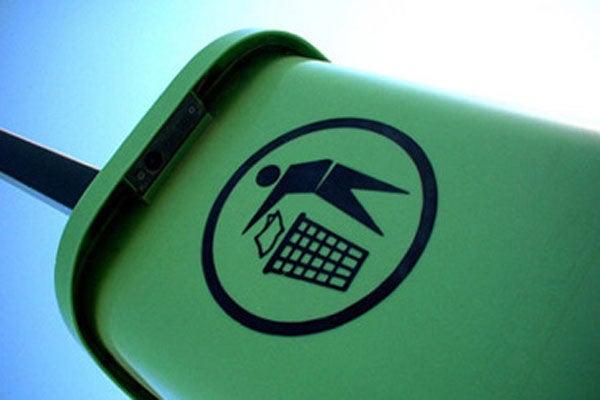
I opened my closet door the other evening after work and was instantly freaked out.
What littered the floor of the closet looked like bits of shredded paper that my dog had chewed up. Unfortunately, it was far more threatening and the clean-up was much more complicated than I had expected. The bits of thin white scraps were actually broken pieces of a compact fluorescent light bulb that had fallen off of a shelf and shattered all over the closet floor. Normally, with a broken light bulb, some sweeping up and perhaps a final vacuuming is all that's required. Not so with a CFL, because as I'm sure all of you already know, the bulbs we're all supposed to be screwing into our sockets to save energy and the planet contain the highly toxic mercury. So what's a freaked-out person to do?
I went onto the web and googled "broken CFL bulb" and learned that there are some very strict government guidelines for cleaning up and disposing of the residue from these broken bulbs. For starters, you are not allowed to vacuum up the mess, as it could send mercury vapors into the air. Same goes for sweeping. You'll contaminate the broom. Never mind mopping it up, either. And if it gets on your clothing, you can't put it in the washing machine for the same reasons. Mercury, like the planet, gets around. So if you too suffer from this broken bulb syndrome, here's what the government says you need to do. And by the way, I think I'm switching to candles. (Click for further instruction. You can also learn more about going green in your own home by clicking here)
Before Clean-up: Air Out the Room
Have people and pets leave the room, and don't let anyone walk through the breakage area on their way out.
Open a window and leave the room for 15 minutes or more.
Shut off the central forced-air heating/air conditioning system, if you have one.
Clean-Up Steps for Hard Surfaces
Carefully scoop up glass fragments and powder using stiff paper or cardboard and place them in a glass jar with metal lid (such as a canning jar) or in a sealed plastic bag.
Use sticky tape, such as duct tape, to pick up any remaining small glass pieces and powder.
Wipe the area clean with damp paper towels or disposable wet wipes. Place towels in the glass jar or plastic bag.
Do not use a vacuum or broom to clean up the broken bulb on hard surfaces.
Clean-up Steps for Carpeting or Rug
Carefully pick up glass fragments and place them in a glass jar with metal lid (such as a canning jar) or in a sealed plastic bag.
Use sticky tape, such as duct tape, to pick up any remaining small glass fragments and powder.
If vacuuming is needed after all visible materials are removed, vacuum the area where the bulb was broken.
Remove the vacuum bag (or empty and wipe the canister), and put the bag or vacuum debris in a sealed plastic bag.
Clean-up Steps for Clothing, Bedding, etc.
If clothing or bedding materials come in direct contact with broken glass or mercury-containing powder from inside the bulb that may stick to the fabric, the clothing or bedding should be thrown away. Do not wash such clothing or bedding because mercury fragments in the clothing may contaminate the machine and/or pollute sewage.
You can, however, wash clothing or other materials that have been exposed to the mercury vapor from a broken CFL, such as the clothing you are wearing when you cleaned up the broken CFL, as long as that clothing has not come into direct contact with the materials from the broken bulb.
If shoes come into direct contact with broken glass or mercury-containing powder from the bulb, wipe them off with damp paper towels or disposable wet wipes. Place the towels or wipes in a glass jar or plastic bag for disposal.
Disposal of Clean-up Materials
Immediately place all clean-up materials outdoors in a trash container or protected area for the next normal trash pickup.
Wash your hands after disposing of the jars or plastic bags containing clean-up materials.
Check with your local or state government about disposal requirements in your specific area. Some states do not allow such trash disposal. Instead, they require that broken and unbroken mercury-containing bulbs be taken to a local recycling center.
Future Cleaning of Carpeting or Rug: Air Out the Room During and After Vacuuming
The next several times you vacuum, shut off the central forced-air heating/air conditioning system and open a window before vacuuming.
Keep the central heating/air conditioning system shut off and the window open for at least 15 minutes after vacuuming is completed.